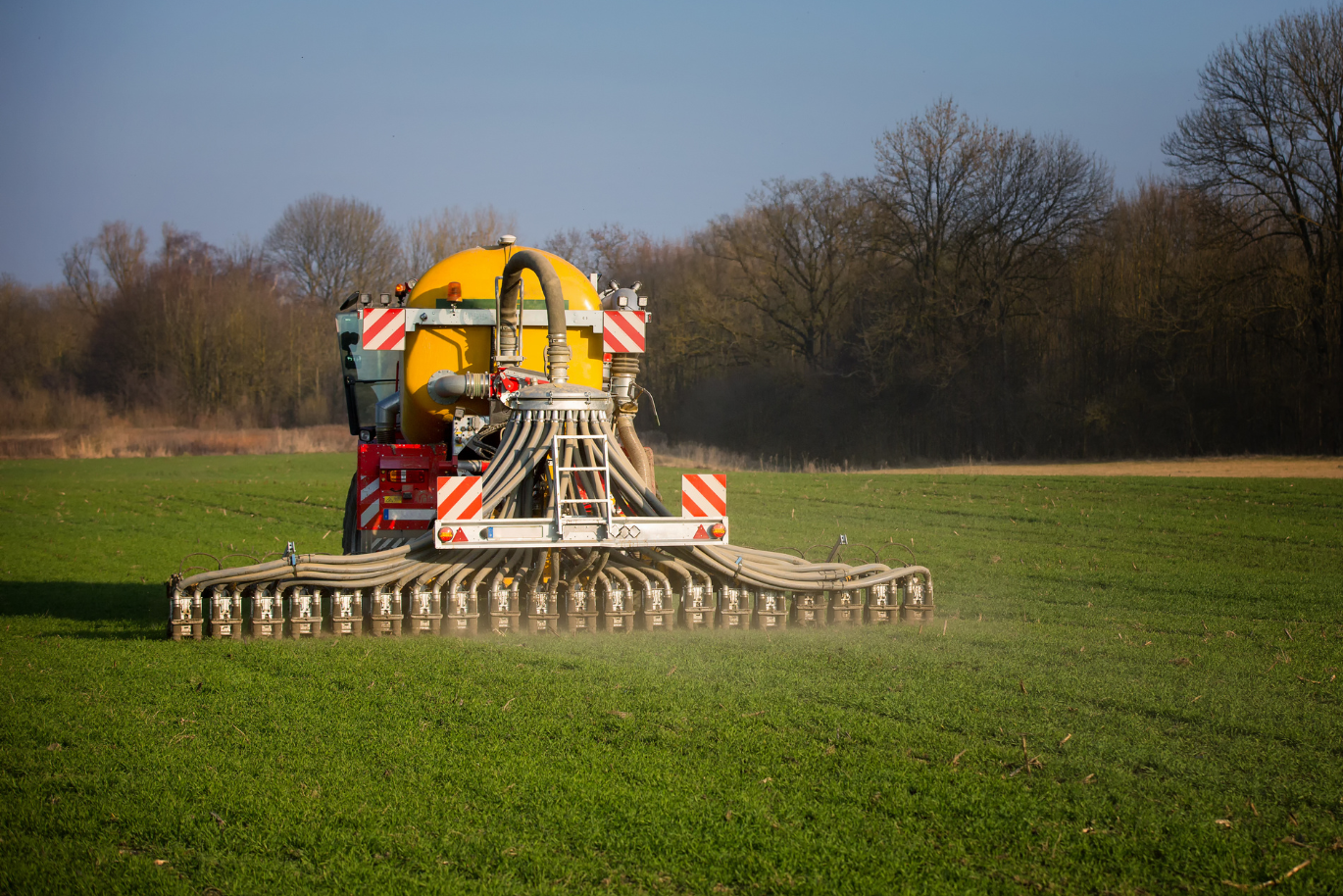Researchers Warn: EU’s Criteria for Climate Mitigation Products Are Too Lenient
The EU’s Fertiliser Regulation sets the criteria for when products can be marketed as urease, nitrification, or denitrification inhibitors. However, according to an international group of researchers, these criteria may allow partially or entirely ineffective products - which do not achieve the intended climate effects - to enter the market.

Fact: Urease
Urease is an enzyme that catalyzes the breakdown of urea into ammonia and CO₂. Urease is found in many bacteria, fungi, and plants. In bacteria, it plays an important role in increasing the pH of their surroundings by producing ammonia, which can help them survive in acidic environments. In agriculture, urease is important for the breakdown of urea in soil and livestock manure, which affects the nitrogen cycle and can contribute to ammonia loss to the atmosphere.
Commercial fertilisers and livestock manures are important tools in agriculture but are also sources of both ammonia and nitrous oxide emissions, as well as nitrate leaching. These issues can be addressed by adding urease, nitrification, or denitrification inhibitors to the fertiliser.
Ammonia emissions contribute to particulate pollution in the atmosphere and biodiversity loss in natural areas. They also reduce the amount of nitrogen available for crop growth, making ammonia loss an economic loss for farmers.
Fertilisers containing urea (urine-based compounds) are a particularly significant source of ammonia emissions, as urea is broken down to ammonium by the enzyme urease, which occurs naturally in soil. The use of urease inhibitors delays this breakdown, allowing more time for natural soil processes to remove ammonium, thereby reducing ammonia emissions by up to 50 percent.
Nitrous oxide is a potent greenhouse gas released during both nitrification and denitrification processes, where naturally occurring soil bacteria convert nitrate into free nitrogen or nitrous oxide. Nitrification inhibitors slow the rate at which ammonium in nitrogen fertilisers is converted into nitrate. Their use reduces nitrous oxide emissions by 40–45 percent and can also reduce nitrate leaching.
Two-Week Testing Period Is Inadequate
Thus, urease and nitrification inhibitors have significant potential as tools to abate ammonia emissions and mitigate agricultural greenhouse gas emissions. The EU’s Fertiliser Regulation, which came into effect in July 2022, sets the criteria for when a new substance can be marketed as a urease or nitrification inhibitor.
However, the regulation’s criteria only require that the urease or nitrification-inhibiting substance reduce the relevant process by at least 20 percent when tested in a laboratory on bare soil for two weeks. A group of 21 researchers from around the world criticizes these criteria in an article in the scientific journal Global Change Biology, calling them insufficient.
“There are two major problems with the criteria. First, the required reduction of 20 percent is significantly lower than what can be achieved with the products currently on the market. This means manufacturers could choose to save money by reducing the dosage of the active ingredient without informing anyone,” says Nicholas Hutchings, senior researcher at the Department of Agroecology at Aarhus University, who led the coordination of the article. As such, one cannot expect the use of urease or nitrification inhibitors to deliver the climate benefits anticipated by farmers and authorities.
Secondly, Nicholas Hutchings points out that it is well known that the effectiveness of inhibitors can vary significantly depending on the conditions in which they are used. Therefore, a substance that meets the laboratory criteria may be less effective or entirely ineffective under actual field conditions.
Need for Better Documentation
Countries that have signed agreements on air pollution, such as the Paris Agreement, are obligated to reduce emissions and report their efforts in emission inventories. Since agriculture is a major source of both ammonia and nitrous oxide emissions, this may lead countries, as in Denmark, to implement environmental regulations requiring farmers to use mitigation technologies like urease and nitrification inhibitors.
The research group believes that new urease and nitrification inhibitor products should only be included in emission inventories once their effects have been quantified through multi-year field trials that account for realistic field conditions.
“Countries must develop and document a method to calculate the climate effect of urease and nitrification inhibitors, so the emission inventories become scientifically robust. It is crucial that countries’ emission reductions are credible so that farmers and policymakers can trust the reported effects of various reduction measures,” says Nicholas Hutchings.
Therefore, the group of researchers has outlined a set of six criteria that documentation of the effect of urease and nitrification inhibitors should meet to be used in national emission inventories.
| POINTS | CONTENT AND PURPOSE |
|---|---|
| Collaborating partners |
|
| External funding | Ingen |
| Link to scientific article | |
| Contact information | Seniorforsker Nicholas Hutchings, Institut for Agroøkologi, Aarhus Universitet. Tlf.: 21 62 27 21 eller mail: nick.hutchings@agro.au.dk |
